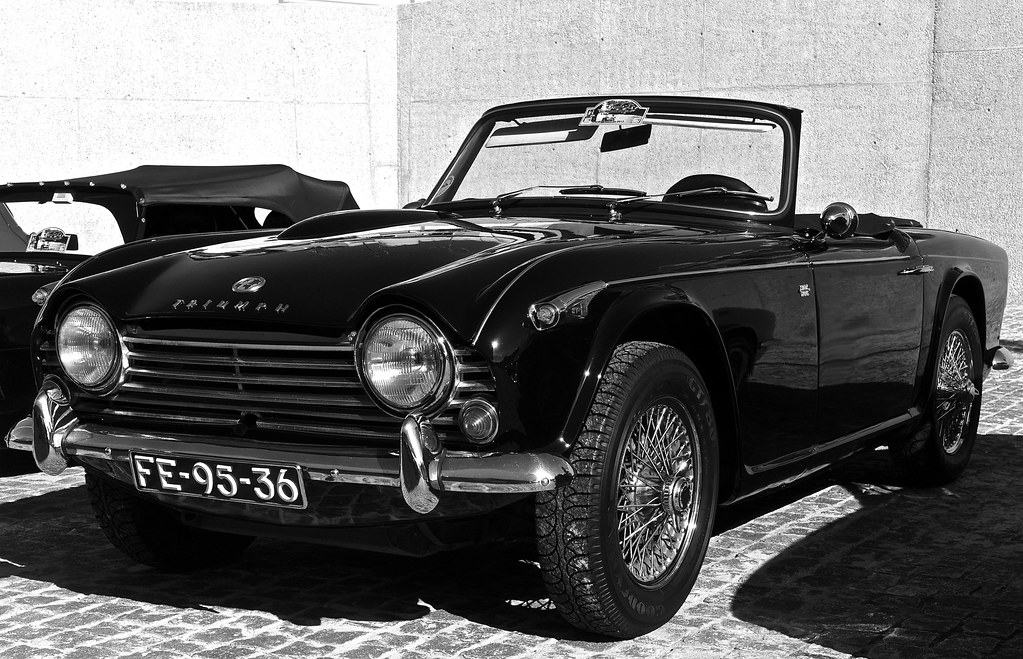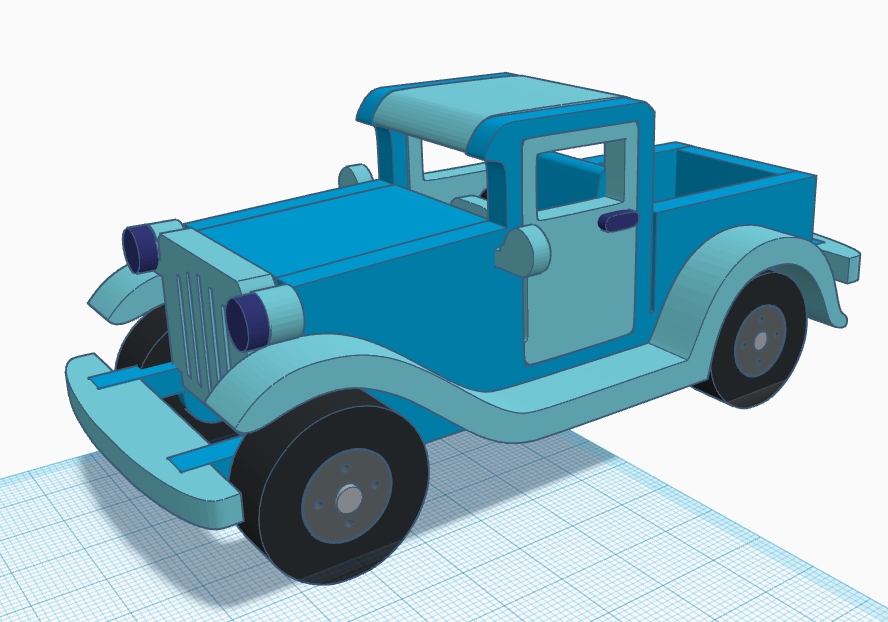
When it comes to purchasing a pickup truck, the promise of cutting-edge technology, improved fuel efficiency, and enhanced comfort often draws consumers in. However, the shiny veneer of modern engineering can sometimes obscure underlying issues that lead to significant frustration and unexpected costs down the road. While some trucks from past decades have proven their mettle as genuine workhorses, refusing to quit despite years of service, others have quickly faded into obscurity due to inherent flaws. This reality often raises uncomfortable questions about whether newer automatically means better, especially when considering long-term durability and reliability.
Indeed, even the most reputable brands, known for their dependability, have released models that mechanics and consumers alike have come to regret. The market is flooded with options, and while many come from trusted names like Toyota, Ram, and Ford, an alarming number of models are less reliable than they appear. This means that people who own them may become quite familiar with auto mechanics, not by choice, but out of necessity. It is crucial for prospective buyers to distinguish between a truck that offers lasting value and one that will become a financial drain.
This in-depth guide aims to empower you with essential knowledge, drawing on expert opinions and consumer reports to highlight specific truck models and years that have earned a reputation for significant reliability issues. We delve into the mechanical, electrical, and structural problems that plague these vehicles, providing clear, actionable insights to help you make informed purchasing decisions. Our objective is to shed light on these problematic trucks, allowing you to avoid costly mistakes and save your hard-earned money.

1. **Ford Trucks with 6.4-liter Power Stroke Engine**Among the trucks that mechanics unequivocally advise against, Ford models equipped with the 6.4-liter Power Stroke engine stand out as a particularly egregious example. This engine’s reputation is so poor that one popular mechanic, Zach Trahan, began his list of trucks to avoid by stating, “Let’s start with an absolute banger, and the only thing that’s gonna be banging is the engine.” This vividly illustrates the severity of the issues associated with this particular powertrain.
Ford only produced these engines for two years, a fact that in itself signals potential underlying problems or a quick discontinuation due to overwhelming failures. Despite their short production run, trucks utilizing the 6.4-liter Power Stroke engine can still be found on the used market, presenting a significant risk to unsuspecting buyers. The phrase “the only thing that’s gonna be banging is the engine” strongly implies catastrophic internal engine failures, a scenario that translates into incredibly expensive and often unfeasible repairs for owners.
For anyone considering a used Ford truck, it is imperative to verify the engine type. Avoiding any model with the 6.4-liter Power Stroke engine could save you from what many consider to be a ticking time bomb of mechanical issues. The consensus among mechanics is clear: these engines are prone to severe problems that quickly erode the value and functionality of the vehicle, making them a poor investment despite any attractive initial price tag.
Car Model Information: 2024 Ford F-150 XLT
Name: Ford F-Series
Caption: 2022 Ford F-150 Lariat Luxury
Manufacturer: Ford Motor Company
Aka: Ford Lobo (Mexico, 1992–present)
Production: 1948–present
Class: Pickup truck#Full-size pickup truck
Layout: Front-engine, rear-wheel-drive layout,rear-wheel drive
Predecessor: 1941 Ford
Categories: All-wheel-drive vehicles, All Wikipedia articles written in American English, All articles that may contain original research, All articles with unsourced statements, Articles that may contain original research from September 2020
Summary: The Ford F-Series is a series of light-duty trucks marketed and manufactured by the Ford Motor Company since model year 1948 as a range of full-sized pickup trucks — positioned between Ford’s Ranger and Super Duty pickup trucks. Alongside the F-150 (introduced in 1975), the F-Series also includes the Super Duty series (introduced in 1999), which includes the heavier-duty F-250 through F-450 pickups, F-450/F-550 chassis cabs, and F-600/F-650/F-750 Class 6–8 commercial trucks.
The most popular version of the model line is the F-150 pickup truck, currently in its fourteenth generation (introduced for the 2021 model year). From 1953 to 1983, the entry-level F-Series pickup was the 1⁄2 ton F-100. Starting in 1984, the F-150 became the entry-level. The F-150 has a long-running high-performance off-road trim level introduced for 2010, the (SVT) Raptor currently consisting of three generations. Production of the F-150 SVT Raptor ended in 2014 and was succeeded in 2017 by a new F-150 Raptor, which is based on the thirteenth and fourteenth generation F-150.
The F-Series trucks have been developed into a wide range of design configurations. Alongside medium-duty trucks and “Big Job” conventional trucks (the forerunners of the Ford L-series), the model line has been marketed as a chassis-cab truck and a panel van (a predecessor of the Ford E-Series). The F-Series has served as the platform for various full-sized Ford SUVs, including the Ford Bronco, Ford Expedition/Lincoln Navigator, and Ford Excursion. The F-Series has been marketed by its three North American brands: by Mercury as the M-Series (in Canada from 1948 to 1968), and by Lincoln in the 2000s, as the Blackwood and the later Mark LT (2010s for the latter in Mexico only).
Since 1977, the F-Series has remained the best-selling pickup truck line in the United States; it has been the best-selling vehicle overall since 1981. The F-Series has been the best-selling truck in Canada for over 50 years. As of the 2018 model year, the F-Series generated $41 billion (~$50.3 billion in 2024) in annual revenue for Ford. By January 2022, the F-Series models have sold over 40 million units. Currently, Ford manufactures the F-Series in four facilities in the United States.
Get more information about: Ford F-Series
Buying a high-performing used car >>>
Brand: Ford Model: Trucks
Price: $37,999 Mileage: 54,054 mi.
Read more about: 14 Celebrity-Owned Cars That Were Wrecked in Under 24 Hours of Ownership

2. **Ford F-150 (2015-2017)**The Ford F-150, a perennial bestseller and a cornerstone of the American truck market, surprisingly has specific model years that fall significantly short in terms of reliability. The 2015-2017 models, in particular, encountered a multitude of significant problems that tarnished the truck’s otherwise solid reputation for durability. These issues were not minor inconveniences but rather serious defects that impacted performance, safety, and long-term owner satisfaction.
Transmission issues were frequently reported by owners of these F-150s, including instances of sudden failure and rough shifting. Such malfunctions are not only frustrating but can also pose safety risks, leading to unexpected loss of power or control. Beyond the transmission, power steering failures and faulty door latches also became serious safety concerns, prompting multiple recalls by the manufacturer.
Adding to these mechanical and safety woes, some owners reported rapid corrosion of the new aluminum body introduced in these years. While the aluminum body was intended to improve fuel efficiency and reduce weight, its susceptibility to corrosion added another layer of unexpected maintenance and repair costs. These collective factors undermined the reliability and durability expected from a truck of the F-150’s stature, making these specific model years a cautionary tale for buyers.
Car Model Information: 2024 Ford F-150 XLT
Name: Ford F-Series
Caption: 2022 Ford F-150 Lariat Luxury
Manufacturer: Ford Motor Company
Aka: Ford Lobo (Mexico, 1992–present)
Production: 1948–present
Class: Pickup truck#Full-size pickup truck
Layout: Front-engine, rear-wheel-drive layout,rear-wheel drive
Predecessor: 1941 Ford
Categories: All-wheel-drive vehicles, All Wikipedia articles written in American English, All articles that may contain original research, All articles with unsourced statements, Articles that may contain original research from September 2020
Summary: The Ford F-Series is a series of light-duty trucks marketed and manufactured by the Ford Motor Company since model year 1948 as a range of full-sized pickup trucks — positioned between Ford’s Ranger and Super Duty pickup trucks. Alongside the F-150 (introduced in 1975), the F-Series also includes the Super Duty series (introduced in 1999), which includes the heavier-duty F-250 through F-450 pickups, F-450/F-550 chassis cabs, and F-600/F-650/F-750 Class 6–8 commercial trucks.
The most popular version of the model line is the F-150 pickup truck, currently in its fourteenth generation (introduced for the 2021 model year). From 1953 to 1983, the entry-level F-Series pickup was the 1⁄2 ton F-100. Starting in 1984, the F-150 became the entry-level. The F-150 has a long-running high-performance off-road trim level introduced for 2010, the (SVT) Raptor currently consisting of three generations. Production of the F-150 SVT Raptor ended in 2014 and was succeeded in 2017 by a new F-150 Raptor, which is based on the thirteenth and fourteenth generation F-150.
The F-Series trucks have been developed into a wide range of design configurations. Alongside medium-duty trucks and “Big Job” conventional trucks (the forerunners of the Ford L-series), the model line has been marketed as a chassis-cab truck and a panel van (a predecessor of the Ford E-Series). The F-Series has served as the platform for various full-sized Ford SUVs, including the Ford Bronco, Ford Expedition/Lincoln Navigator, and Ford Excursion. The F-Series has been marketed by its three North American brands: by Mercury as the M-Series (in Canada from 1948 to 1968), and by Lincoln in the 2000s, as the Blackwood and the later Mark LT (2010s for the latter in Mexico only).
Since 1977, the F-Series has remained the best-selling pickup truck line in the United States; it has been the best-selling vehicle overall since 1981. The F-Series has been the best-selling truck in Canada for over 50 years. As of the 2018 model year, the F-Series generated $41 billion (~$50.3 billion in 2024) in annual revenue for Ford. By January 2022, the F-Series models have sold over 40 million units. Currently, Ford manufactures the F-Series in four facilities in the United States.
Get more information about: Ford F-Series
Buying a high-performing used car >>>
Brand: Ford Model: F-150
Price: $39,997 Mileage: 45,515 mi.
Read more about: Jalopnik’s Ultimate Warning: 14 Trucks That Will Leave You Stranded (And Broke) On The Side Of The Road

3. **Ram 1500 (2013-2014)**The Ram 1500, often considered a strong contender in the full-size pickup segment, saw its 2013-2014 models plagued by a series of reliability issues that significantly frustrated many owners. While some might describe the Ram 1500 generally as “decently reliable” needing only lifter changes, these specific model years presented far more profound and widespread problems that undermined their long-term dependability.
Transmission malfunctions were a common complaint, with owners frequently experiencing rough shifting and, in many cases, premature failure. Such extensive transmission problems typically necessitate costly and time-consuming repairs, severely impacting the vehicle’s operational lifespan and owner experience. These issues alone were enough to raise red flags for mechanics and consumers alike.
Beyond the transmission, the air suspension systems in these models would often break down, leading to an uncomfortable ride and additional repair expenses. Furthermore, electrical components, particularly the infotainment system, frequently malfunctioned, adding to the truck’s woes. These persistent electrical glitches, coupled with critical mechanical failures, collectively undermined the overall reliability and driver satisfaction with the 2013-2014 Ram 1500 models.
Car Model Information: 2017 RAM 1500 Tradesman/Express
Name: Dodge Ram / Ram pickup
Caption: 2017 Ram 1500 Express
Manufacturer: Dodge
ModelYears: 1981–present
Production: October 1980 – present
Class: Pickup truck#Full-size pickup truck,Pickup truck#Heavy-duty pickup truck
Layout: Front-engine, rear-wheel-drive layout,rear-wheel drive
Predecessor: Dodge D series
Categories: 1990s cars, 2000s cars, 2010s cars, 2020s cars, All-wheel-drive vehicles
Summary: The Ram pickup (marketed as the Dodge Ram until 2010 when Ram Trucks was spun-off from Dodge) is a full-size pickup truck manufactured by Stellantis North America (formerly Chrysler Group LLC and FCA US LLC) and marketed from 2010 onwards under the Ram Trucks brand. The current fifth-generation Ram debuted at the 2018 North American International Auto Show in Detroit, Michigan, in January of that year.
Previously, Ram was part of the Dodge line of light trucks. The Ram name was introduced in October 1980 for model year 1981, when the Dodge D series pickup trucks and B series vans were rebranded, though the company had used a ram’s-head hood ornament on some trucks as early as 1933.
Ram trucks have been named Motor Trend magazine’s Truck of the Year eight times; the second-generation Ram won the award in 1994, the third-generation Ram heavy-duty won the award in 2003, the fourth-generation Ram Heavy Duty won in 2010 and the fourth-generation Ram 1500 won in 2013 and 2014, and the current fifth-generation Ram pickup became the first truck in history to win the award four times, winning in 2019, 2020, 2021 and most recently, 2025.
Get more information about: Ram pickup
Buying a high-performing used car >>>
Brand: Ram Model: 1500
Price: $17,990 Mileage: 49,005 mi.
Read more about: Don’t Buy These Used Cars: 30 Models Known for Costly Problems
.jpg)
4. **Chevrolet Silverado 1500 (2014-2016)**The Chevrolet Silverado 1500, another stalwart of the American truck market, also encountered a period of significant reliability struggles with its 2014-2016 models. Despite an initial perception of robustness, these years saw numerous complaints, particularly centered around the truck’s eight-speed transmission. Owners frequently reported rough shifts and, disturbingly, eventual transmission failure, which invariably led to costly and extensive repairs.
Adding to the transmission troubles, problems with excessive oil consumption and engine stalling were common, particularly in V8 models. These engine-related issues not only compromise performance and fuel efficiency but also indicate deeper internal mechanical flaws that can be expensive to diagnose and fix. Such persistent problems can drastically reduce the lifespan of the engine and the vehicle as a whole.
Compounding these mechanical woes, the 2014-2016 Silverado 1500 also faced several recalls due to malfunctioning seat belts and airbags. These safety-critical issues highlight a broader concern regarding the build quality and design integrity of these models. The combination of serious powertrain problems and fundamental safety defects makes these Silverado years ones that prospective buyers should approach with extreme caution.
Car Model Information: 2019 Lexus GX 460 Premium
Name: Chevrolet Silverado/GMC Sierra
Caption: 2022 Silverado 2500HD High Country
Manufacturer: General Motors
Aka: unbulleted list
Production: 1998–present
Assembly: unbulleted list
Class: unbulleted list
BodyStyle: unbulleted list
Layout: unbulleted list
Predecessor: unbulleted list
Categories: 2000s cars, 2010s cars, 2020s cars, All-wheel-drive vehicles, All Wikipedia articles written in American English
Summary: The Chevrolet Silverado is a range of trucks manufactured by General Motors under the Chevrolet brand. Introduced for the 1999 model year, the Silverado is the successor to the long-running Chevrolet C/K model line. Taking its name from the top trim level from the Chevrolet C/K series, the Silverado is offered as a series of full-size pickup trucks, chassis cab trucks, and medium-duty trucks. The fourth generation of the model line was introduced for the 2019 model year.
The Chevrolet Silverado shares mechanical commonality with the identically related GMC Sierra; GMC ended the use of the C/K nomenclature a model generation prior to Chevrolet. In Mexico, high-trim level versions of the Silverado use the Chevrolet Cheyenne name (not to be confused with the 2003 concept). Competing against the Ford F-Series, Ram pickup, Toyota Tundra, and Nissan Titan, the Silverado is among the best-selling vehicles in the United States, having sold over 12 million trucks since its introduction in 1998 as a 1999 model year.
Get more information about: Chevrolet Silverado
Buying a high-performing used car >>>
Brand: Chevrolet Model: Silverado 1500
Price: $30,991 Mileage: 72,932 mi.
Read more about: Jalopnik’s Ultimate Warning: 14 Trucks That Will Leave You Stranded (And Broke) On The Side Of The Road
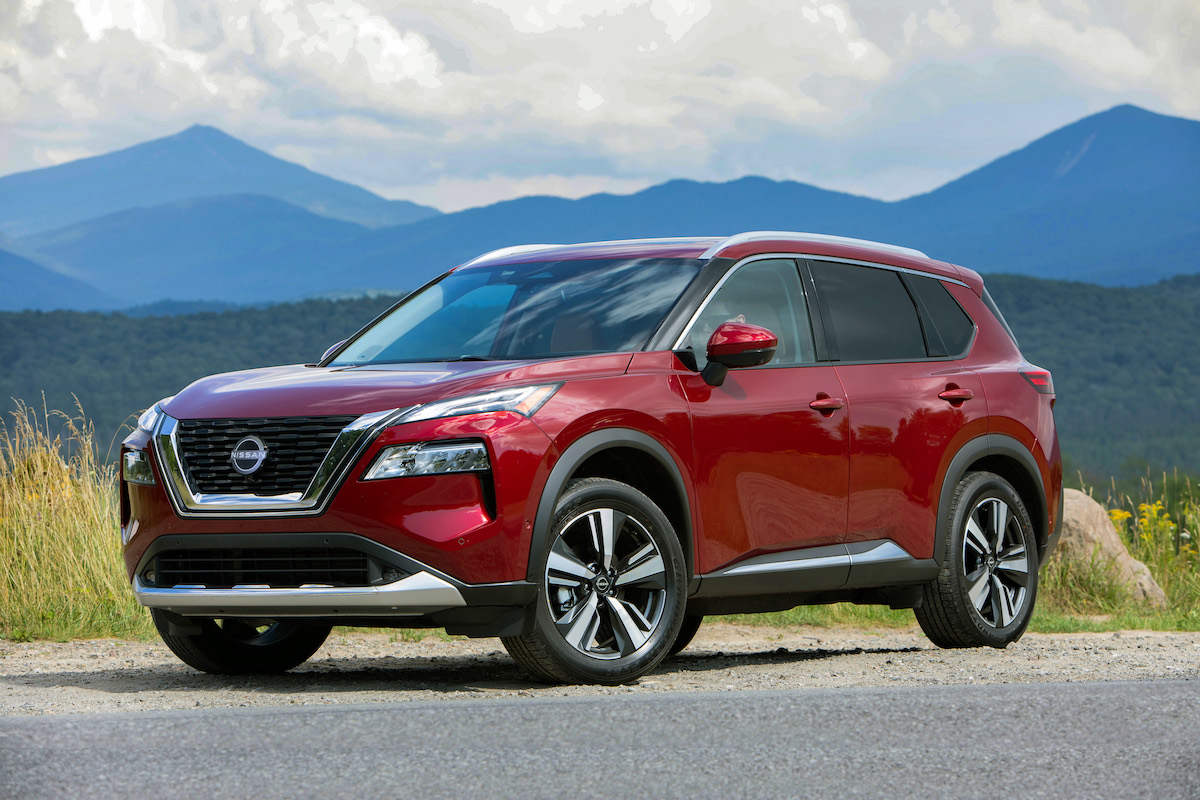
5. **Nissan Titan (2016-2017)**While the Nissan Titan aimed to compete in the full-size truck segment, its 2016-2017 models suffered from multiple drivetrain issues that considerably dampened its appeal among truck buyers. These problems were not isolated incidents but rather systemic weaknesses that affected the truck’s core performance and long-term reliability. The robust appearance of the Titan often belied these underlying mechanical deficiencies.
Central to the Titan’s issues during these years were problems with its rear axle and differential, which were notorious for causing loud noises and occasional failure. These drivetrain components are fundamental to a truck’s ability to handle loads and deliver power, making their unreliability a significant concern. Such failures often require extensive and expensive repairs, adding to the burden of ownership.
Furthermore, while the optional Cummins diesel engine offered impressive power, it frequently experienced injector and turbocharger problems. These issues can lead to significant performance losses, reduced fuel efficiency, and high repair costs, undermining the very benefits a diesel engine is supposed to offer. To round out the complaints, the truck’s infotainment system was also prone to glitches, frustrating drivers with unreliable electronics. These collective issues ultimately contributed to a decline in the Titan’s reliability ratings for these model years.
Car Model Information: 2018 Nissan Titan SV
Name: Nissan Titan
Manufacturer: Nissan
Production: September 2003 – November 2024
ModelYears: 2004–2024
Assembly: Canton, Mississippi
Class: Pickup_truck#Full-size_pickup_truck
BodyStyle: 2-door pickup truck,4-door pickup truck
Layout: Front-engine, rear-wheel-drive layout
Platform: Nissan F-Alpha
Caption: 2021 Nissan Titan Crew Cab PRO-4X (Canada)
Categories: 2010s cars, 2020s cars, All-wheel-drive vehicles, All articles with unsourced statements, Articles with short description
Summary: The Nissan Titan is a full-size pickup truck which was manufactured by Nissan USA in Canton, Mississippi for the North American market from September 2003 to November 2024 over two generations. The first generation was produced for the 2004-2015 model years (MY), with an intermediate refresh for MY 2008. The second generation was made for MY 2016-2024, with production beginning in November 2015 and an intermediate refresh for MY 2020. Both generations have an extended cab or crew cab design, with the second-generation also having a two-door regular cab variant. The Titan has a V8 engine which is mounted in the front and either rear-wheel drive or four-wheel drive, with the second generation adding a diesel engine alongside a revised version of the gasoline engine used in the first generation.
Get more information about: Nissan Titan
Buying a high-performing used car >>>
Brand: Nissan Model: Titan
Price: $21,685 Mileage: 89,835 mi.
Read more about: Jalopnik’s Ultimate Warning: 14 Trucks That Will Leave You Stranded (And Broke) On The Side Of The Road

6. **Toyota Tundra (2007-2008)**Toyota is a brand synonymous with reliability, often ranking at the top for vehicle dependability. However, even the best can stumble, and the 2007-2008 Tundra models did not live up to the brand’s esteemed expectations. These specific years presented a series of unexpected and severe problems that significantly eroded trust among owners and mechanics, proving that no manufacturer is immune to missteps.
A widespread issue with camshaft failure caused engines to stall unexpectedly, a highly dangerous and inconvenient problem that led to significant safety concerns. An engine stalling at speed or in traffic is a critical safety hazard and a clear indicator of a fundamental design or manufacturing flaw. This major powertrain defect required urgent attention and often costly intervention.
Owners also reported premature rusting of the truck’s frame, a structural integrity issue that led to expensive recalls and repairs. Frame rust can compromise the vehicle’s safety and longevity, especially for trucks used for heavy-duty tasks or in harsh environments. Coupled with transmission problems and air induction system failures, these issues collectively and considerably diminished trust in these Tundra models, making them a rare blemish on Toyota’s otherwise pristine reputation for dependability.
Continuing our examination of trucks that mechanics advise against, we now turn to additional models that have presented significant reliability challenges for their owners. These vehicles, despite their initial appeal or brand recognition, have been plagued by issues ranging from serious powertrain defects to persistent electrical malfunctions and structural weaknesses, making them less than ideal choices for long-term dependability.
Car Model Information: 2023 Toyota Tundra SR5
Name: Toyota Tundra
Manufacturer: Toyota
Production: May 1999 – present
ModelYears: 2000–present
Assembly: San Antonio,Texas
Class: Pickup truck#Full-size pickup truck
Layout: unbulleted list
Related: Toyota Sequoia
Predecessor: Toyota T100
Caption: 2022 Toyota Tundra Limited
Categories: 2000s cars, 2010s cars, 2020s cars, All-wheel-drive vehicles, All Wikipedia articles written in American English
Summary: The Toyota Tundra is a full-size pickup truck manufactured in the United States by the Japanese manufacturer Toyota since May 1999. The Tundra was the second full-size pickup to be built by a Japanese manufacturer (the first was the Toyota T100), but the Tundra was the first full-size pickup from a Japanese manufacturer to be built in North America. The Tundra was nominated for the North American Truck of the Year award and was Motor Trend magazine’s Truck of the Year in 2000 and 2008. Initially built in a new Toyota plant in Princeton, Indiana, production was consolidated in 2008 to Toyota’s San Antonio, Texas, factory.
Get more information about: Toyota Tundra
Buying a high-performing used car >>>
Brand: Toyota Model: Tundra
Price: $43,961 Mileage: 34,237 mi.
Read more about: Jalopnik’s Ultimate Warning: 14 Trucks That Will Leave You Stranded (And Broke) On The Side Of The Road

7. **GMC Sierra 1500 (2014-2015)**The GMC Sierra 1500, a truck often favored for its robust appearance and capability, unfortunately saw its 2014-2015 models encounter a significant number of reliability issues. These problems were particularly centered around the vehicle’s powertrain and electrical systems, tarnishing its reputation for durability during these specific model years.
Most notably, the eight-speed transmission in these Sierra 1500s was a frequent source of complaint. Many drivers experienced rough shifts, which is not only an inconvenience but also a sign of underlying mechanical stress. More critically, premature transmission failure was a commonly reported issue, necessitating costly and time-consuming repairs that severely impacted owner satisfaction and the truck’s operational lifespan.
Beyond the transmission, electrical components were also a significant concern. Owners often reported malfunctions with crucial systems such as headlights, which can pose safety risks, and the air conditioning system, affecting comfort. These electrical glitches, while seemingly minor, contribute to an overall sense of unreliability and can be frustrating to diagnose and fix.
Further compounding these issues, engine stalling and excessive oil consumption frequently cropped up in these models. Such engine problems are serious indicators of internal mechanical flaws that can lead to reduced performance and costly overhauls. Collectively, these problems profoundly undermined the Sierra’s reputation for reliability and durability during the 2014-2015 production years.
Car Model Information: 2019 Lexus GX 460 Premium
Name: Chevrolet Silverado/GMC Sierra
Caption: 2022 Silverado 2500HD High Country
Manufacturer: General Motors
Aka: unbulleted list
Production: 1998–present
Assembly: unbulleted list
Class: unbulleted list
BodyStyle: unbulleted list
Layout: unbulleted list
Predecessor: unbulleted list
Categories: 2000s cars, 2010s cars, 2020s cars, All-wheel-drive vehicles, All Wikipedia articles written in American English
Summary: The Chevrolet Silverado is a range of trucks manufactured by General Motors under the Chevrolet brand. Introduced for the 1999 model year, the Silverado is the successor to the long-running Chevrolet C/K model line. Taking its name from the top trim level from the Chevrolet C/K series, the Silverado is offered as a series of full-size pickup trucks, chassis cab trucks, and medium-duty trucks. The fourth generation of the model line was introduced for the 2019 model year.
The Chevrolet Silverado shares mechanical commonality with the identically related GMC Sierra; GMC ended the use of the C/K nomenclature a model generation prior to Chevrolet. In Mexico, high-trim level versions of the Silverado use the Chevrolet Cheyenne name (not to be confused with the 2003 concept). Competing against the Ford F-Series, Ram pickup, Toyota Tundra, and Nissan Titan, the Silverado is among the best-selling vehicles in the United States, having sold over 12 million trucks since its introduction in 1998 as a 1999 model year.
Get more information about: Chevrolet Silverado
Buying a high-performing used car >>>
Brand: GMC Model: Sierra 1500
Price: $30,991 Mileage: 72,932 mi.
Read more about: Jalopnik’s Ultimate Warning: 14 Trucks That Will Leave You Stranded (And Broke) On The Side Of The Road
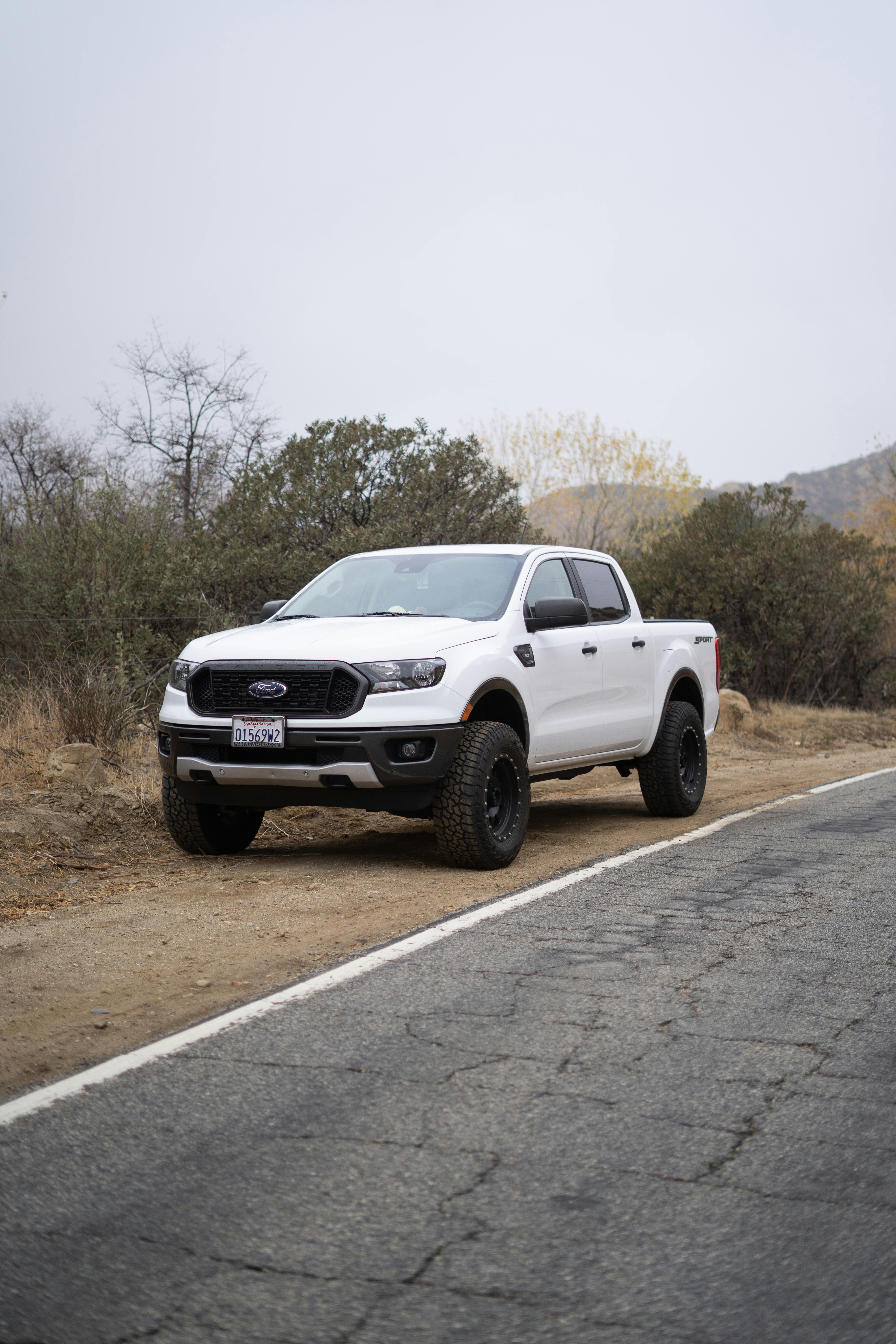
8. **Ford Ranger (2019-2020)**When the Ford Ranger made its highly anticipated return to the North American market in 2019, it was met with considerable excitement. However, this enthusiasm was soon tempered by a series of reliability concerns that surfaced in the 2019-2020 models, challenging the truck’s long-term appeal for many owners.
One of the primary issues involved turbocharger failures in the 2.3L EcoBoost engine. These failures are not only expensive to repair but also lead to significant performance losses, directly impacting the truck’s power and efficiency. Such a critical engine component failing prematurely is a major red flag for prospective buyers seeking a dependable vehicle.
The automatic transmission in these Rangers also proved problematic, with drivers frequently reporting jerky shifting and noticeable hesitation. This erratic behavior can detract from the driving experience and indicate underlying mechanical issues that could lead to more serious transmission problems down the road. Smooth power delivery is a fundamental expectation for any modern truck.
Adding to these mechanical woes were persistent electrical issues, particularly with the infotainment system and the backup camera. While these might seem less critical than engine or transmission failures, they are modern conveniences that owners expect to function flawlessly. Frequent glitches in these systems can be highly frustrating and diminish overall owner satisfaction.
Despite the promising return of the Ford Ranger, these collective problems ultimately diminished the truck’s reliability appeal for its initial comeback years. For consumers, the allure of a new model often clashes with the reality of unexpected repair bills and consistent malfunctions.
Car Model Information: 2020 Ford Ranger XLT
Categories: All set index articles, Articles with short description, Cars introduced in 1982, Commons category link from Wikidata, Ford vehicles
Summary: The Ford Ranger is a compact or mid-size pickup marketed globally by Ford over a series of generations, varying between both in-house or outside development and manufacturing — and with a hiatus in North America from 2011–2018.
Debuting as a compact pickup in North America in 1982 for the 1983 model year, the Ranger was later introduced in some South American countries. From 1998 to 2011, the Ranger nameplate was used for models developed by Mazda for sale outside the North American market. In 2011, Ford introduced the first Ranger based on the T6 platform. Considered a mid-size pickup truck, the model was developed in-house by Ford Australia. In that same year, the North American-market Ranger was discontinued, leaving the T6 platform-based Ranger as the sole Ranger model worldwide.
For the 2019 model year, the Ranger was reintroduced in North America using the globally-marketed T6 model. It is manufactured at the Michigan Assembly Plant at Wayne, Michigan. The Ranger is smaller than the F-150 and larger than the Maverick in the Ford North American pickup truck range, while for markets outside the Americas it is typically the only Ford pickup offered for sale.
The second generation of the T6-based Ranger was released in 2021 for worldwide markets, using a revised T6 platform.
Get more information about: Ford Ranger
Buying a high-performing used car >>>
Brand: Ford Model: Ranger
Price: $22,792 Mileage: 80,324 mi.
Read more about: Jalopnik’s Ultimate Warning: 14 Trucks That Will Leave You Stranded (And Broke) On The Side Of The Road
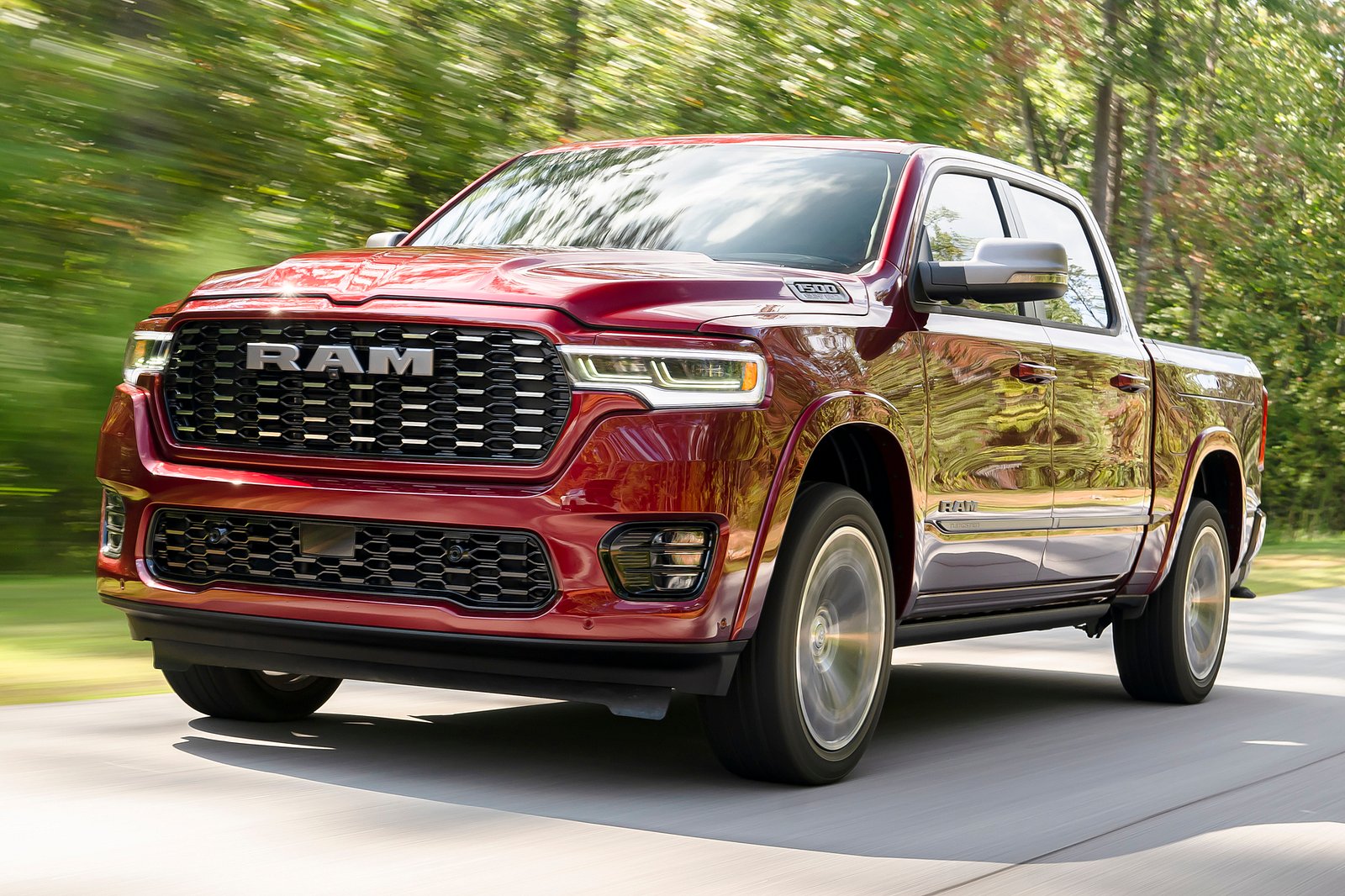
9. **Ram 2500 (2012-2014)**For those in need of a heavy-duty workhorse, the Ram 2500 often comes to mind. However, the 2012-2014 models of this robust truck were unfortunately plagued by a string of significant mechanical issues, particularly affecting their diesel engines and transmissions, making them a less dependable choice for serious applications.
Central to the reliability concerns were the problems with the 6.7L Cummins diesel engine. This powerful engine, while capable, frequently experienced fuel system failures. These failures can be complex and extremely costly to repair, severely impacting the truck’s operational efficiency and leading to unexpected downtime for owners who rely on their vehicles for work.
Transmission problems were also widespread in these Ram 2500s, often escalating to complete failure, especially under heavy towing conditions. A truck designed for demanding tasks must have a transmission that can withstand significant loads; consistent failures in this regard are a critical flaw that compromises the vehicle’s fundamental purpose.
Furthermore, issues with the air suspension system frequently added to the list of headaches for owners. Malfunctioning air suspension can lead to an unstable ride, uneven load distribution, and additional expensive repairs. These collective concerns made the Ram 2500 a significantly less dependable option for those seeking a truly reliable heavy-duty truck during these model years.
Car Model Information: 2025 RAM 2500 SLT
Name: Dodge Ram / Ram pickup
Caption: 2017 Ram 1500 Express
Manufacturer: Dodge
ModelYears: 1981–present
Production: October 1980 – present
Class: Pickup truck#Full-size pickup truck,Pickup truck#Heavy-duty pickup truck
Layout: Front-engine, rear-wheel-drive layout,rear-wheel drive
Predecessor: Dodge D series
Categories: 1990s cars, 2000s cars, 2010s cars, 2020s cars, All-wheel-drive vehicles
Summary: The Ram pickup (marketed as the Dodge Ram until 2010 when Ram Trucks was spun-off from Dodge) is a full-size pickup truck manufactured by Stellantis North America (formerly Chrysler Group LLC and FCA US LLC) and marketed from 2010 onwards under the Ram Trucks brand. The current fifth-generation Ram debuted at the 2018 North American International Auto Show in Detroit, Michigan, in January of that year.
Previously, Ram was part of the Dodge line of light trucks. The Ram name was introduced in October 1980 for model year 1981, when the Dodge D series pickup trucks and B series vans were rebranded, though the company had used a ram’s-head hood ornament on some trucks as early as 1933.
Ram trucks have been named Motor Trend magazine’s Truck of the Year eight times; the second-generation Ram won the award in 1994, the third-generation Ram heavy-duty won the award in 2003, the fourth-generation Ram Heavy Duty won in 2010 and the fourth-generation Ram 1500 won in 2013 and 2014, and the current fifth-generation Ram pickup became the first truck in history to win the award four times, winning in 2019, 2020, 2021 and most recently, 2025.
Get more information about: Ram pickup
Buying a high-performing used car >>>
Brand: Ram Model: 2500
Price: $42,900 Mileage: 112 mi.
Read more about: Jalopnik’s Ultimate Warning: 14 Trucks That Will Leave You Stranded (And Broke) On The Side Of The Road

10. **Chevrolet Colorado (2015-2016)**The Chevrolet Colorado emerged as a popular option in the midsize truck segment, offering a more maneuverable alternative to full-size pickups. However, the 2015-2016 models of the Colorado were unfortunately plagued by several significant issues that undermined their appeal and left owners frustrated with a lack of dependability.
Chief among the complaints were transmission malfunctions. Owners frequently reported issues such as hesitation during acceleration and rough shifts between gears. These problems not only make for an unpleasant driving experience but also signal potential long-term damage to the transmission, often culminating in expensive repairs or even full replacement.
For diesel versions of these models, turbocharger failures were a particularly concerning problem. A malfunctioning turbocharger directly impacts the engine’s power output and fuel efficiency, diminishing both performance and overall reliability. Such a critical engine component failure can lead to significant repair costs and compromise the truck’s ability to perform as expected.
Adding to these mechanical frustrations, the electrical systems, including the touchscreen infotainment system, often malfunctioned. While not directly affecting drivability, persistent glitches with essential cabin electronics can be incredibly annoying and detract from the overall user experience, making the vehicle feel outdated and unreliable prematurely.
These combined problems firmly established the 2015-2016 Chevrolet Colorado model years as notorious for their lack of dependability. Prospective buyers are well-advised to approach these specific models with caution, anticipating potential repair costs and frustrating performance issues.
Car Model Information: 2022 Chevrolet Colorado ZR2
Name: Chevrolet Colorado
Caption: 2024 Chevrolet Colorado Z71
Manufacturer: General Motors
Production: 2003–2012, 2014–present (US),2004–2020
(Thailand),2011–present (Brazil)
Class: Pickup truck,Pickup truck
Layout: Front-engine, rear-wheel-drive layout
Predecessor: Chevrolet S-10,Chevrolet D-Max,Holden Rodeo,Holden Ute
Aka: GMC Canyon,Holden Colorado
Categories: 2010s cars, 2020s cars, All-wheel-drive vehicles, All articles with dead external links, Articles with dead external links from November 2016
Summary: The Chevrolet Colorado (sharing mechanical commonality with the GMC Canyon) is a series of compact pickup trucks (mid-size since second generation) marketed by American automaker General Motors. They were introduced in 2004 to replace the Chevrolet S-10 and GMC S-15/Sonoma compact pickups. The Colorado is named after the U.S. state of Colorado, while the Canyon took its name from the deep chasm between cliffs.
Get more information about: Chevrolet Colorado
Buying a high-performing used car >>>
Brand: Chevrolet Model: Colorado
Price: $33,991 Mileage: 40,794 mi.
Read more about: Unreliable Rides: 15 Trucks That Become Costly Nightmares Well Before 80,000 Miles
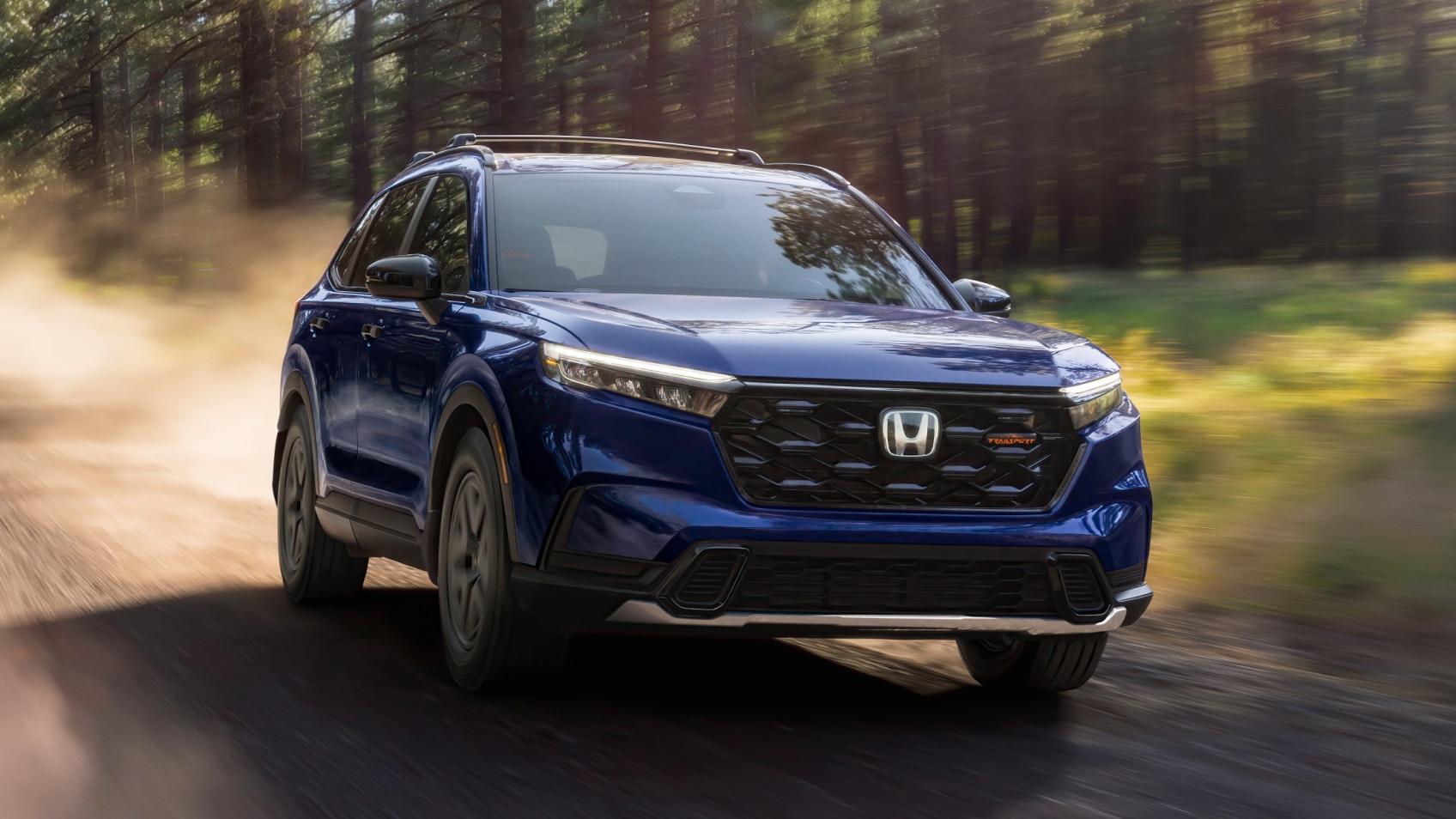
11. **Honda Ridgeline (2006-2007)**Honda’s entry into the pickup truck market with the Ridgeline in 2006-2007 represented a departure from its typical car-based lineup. While Honda generally boasts an excellent reputation for reliability, these early Ridgeline models faced a unique set of challenges that left an early black mark on the truck’s record.
A significant concern for many owners was the premature failure of the transmission, often requiring costly and extensive repairs. This issue is particularly troubling for a vehicle from a brand known for its powertrain longevity. A major component like the transmission failing early in a vehicle’s life cycle points to fundamental design or manufacturing weaknesses.
Structural issues also surfaced, particularly regarding the unibody design when the truck was used for more demanding, heavy-duty tasks. While the Ridgeline was designed for a blend of car-like comfort and truck utility, its unibody construction struggled under the stress of heavier loads or more rigorous use, raising legitimate concerns about its long-term durability for truck-specific applications.
Compounding these mechanical and structural concerns, the 2006-2007 Ridgeline also experienced a number of electrical problems. Malfunctions with the dashboard, for instance, could lead to unreliable readings or a complete loss of essential information, adding to owner frustration and potentially impacting safety. Despite Honda’s strong reputation, these early issues clearly impacted the Ridgeline’s initial standing in the truck market.
Car Model Information: 2023 Honda Ridgeline Black
Name: Honda Ridgeline
Manufacturer: Honda
Caption: 2022 Honda Ridgeline
Production: 2005–early 2015,2016–present
ModelYears: 2006–2014,2017–present
Assembly: Alliston, Ontario
Class: Pickup truck#Mid-size pickup truck
BodyStyle: 4-door pickup truck
Layout: ubl
Categories: 2010s cars, All-wheel-drive vehicles, All Wikipedia articles written in American English, Articles with short description, CS1 maint: multiple names: authors list
Summary: The Honda Ridgeline is a mid-size pickup truck manufactured and marketed by Honda since the 2006 model year, over two generations in a unibody, crew–cab, short-box configuration with a transverse-mounted engine.
Get more information about: Honda Ridgeline
Buying a high-performing used car >>>
Brand: Honda Model: Ridgeline
Price: $33,830 Mileage: 46,675 mi.
Read more about: Jalopnik’s Ultimate Warning: 14 Trucks That Will Leave You Stranded (And Broke) On The Side Of The Road

12. **Nissan Frontier (2005-2008)**The Nissan Frontier, especially models produced between 2005 and 2008, became infamous among mechanics and truck owners for a particularly catastrophic and widespread issue. This period marked a significant downturn in the Frontier’s reliability perception, making these specific model years some of the most cautioned-against on the used market.
The most notorious problem was a widespread transmission failure often referred to as the “strawberry milkshake of death.” This chilling moniker refers to a critical design flaw where engine coolant would leak into the transmission fluid, creating a milky, destructive mixture. This contamination caused catastrophic damage to the transmission, leading to premature failure and extremely expensive repairs, often requiring a full replacement.
Beyond this major transmission issue, these Frontier models also struggled with timing chain problems. A faulty timing chain can lead to severe engine performance issues, including misfires, reduced power, and ultimately, extensive engine damage if not addressed promptly. These repairs are typically complex and costly, adding another layer of financial burden to owners.
Furthermore, engine performance issues were not uncommon, independently of timing chain problems, indicating a broader susceptibility to mechanical failures. Owners frequently reported a general lack of robustness in the powertrain. These issues collectively made the engine a source of consistent concern, contributing to the truck’s poor reliability ratings.
To exacerbate matters, rust, particularly on the frame, was another significant concern for these models, especially in regions with harsh winters or high humidity. Frame rust compromises the structural integrity of the vehicle, making it unsafe and expensive to repair. This problem severely limits the lifespan and resale value of affected trucks.
The combination of the “strawberry milkshake of death” transmission issue, pervasive engine problems, and severe rust susceptibility firmly established the 2005-2008 Nissan Frontier as a highly risky purchase. Prospective buyers should exercise extreme caution and consider alternatives to avoid potentially crippling repair costs and significant frustration.
Car Model Information: 2017 Nissan Frontier SV-I4
Categories: All set index articles, Articles with short description, Nissan vehicles, Set index articles on cars, Short description is different from Wikidata
Summary: The Nissan Frontier is a nameplate used on three different pickup truck models by Nissan:
Nissan Frontier (international), an alternative nameplate for the NP300/Navara on some markets.
Nissan Frontier (North America), a rebadged NP300/Navara from 1997 to 2021, then became a separate model since 2021.
Nissan Frontier Pro, a rebadged Dongfeng Z9 that will be available from 2025. Available as both a diesel and plug-in hybrid, with the latter being the initial variant.
Get more information about: Nissan Frontier
Buying a high-performing used car >>>
Brand: Nissan Model: Frontier
Price: $17,435 Mileage: 63,351 mi.
Read more about: Jalopnik’s Ultimate Warning: 14 Trucks That Will Leave You Stranded (And Broke) On The Side Of The Road
While the allure of a new or used truck can be strong, a meticulous approach to research is paramount for any consumer. The detailed issues highlighted across these specific models and years, from debilitating transmission failures and engine problems to critical electrical system glitches and structural corrosion, underscore a crucial message: not all trucks are built to last, and certainly not all deliver the reliability their brands might suggest. By heeding these expert warnings and prioritizing proven dependability over superficial appeal, buyers can navigate the complex truck market more effectively. Avoiding these problematic models can save prospective owners from significant financial strain, unforeseen breakdowns, and the inevitable frustration of owning a vehicle that simply won’t perform as expected, ultimately ensuring a more satisfactory and cost-effective ownership experience.

